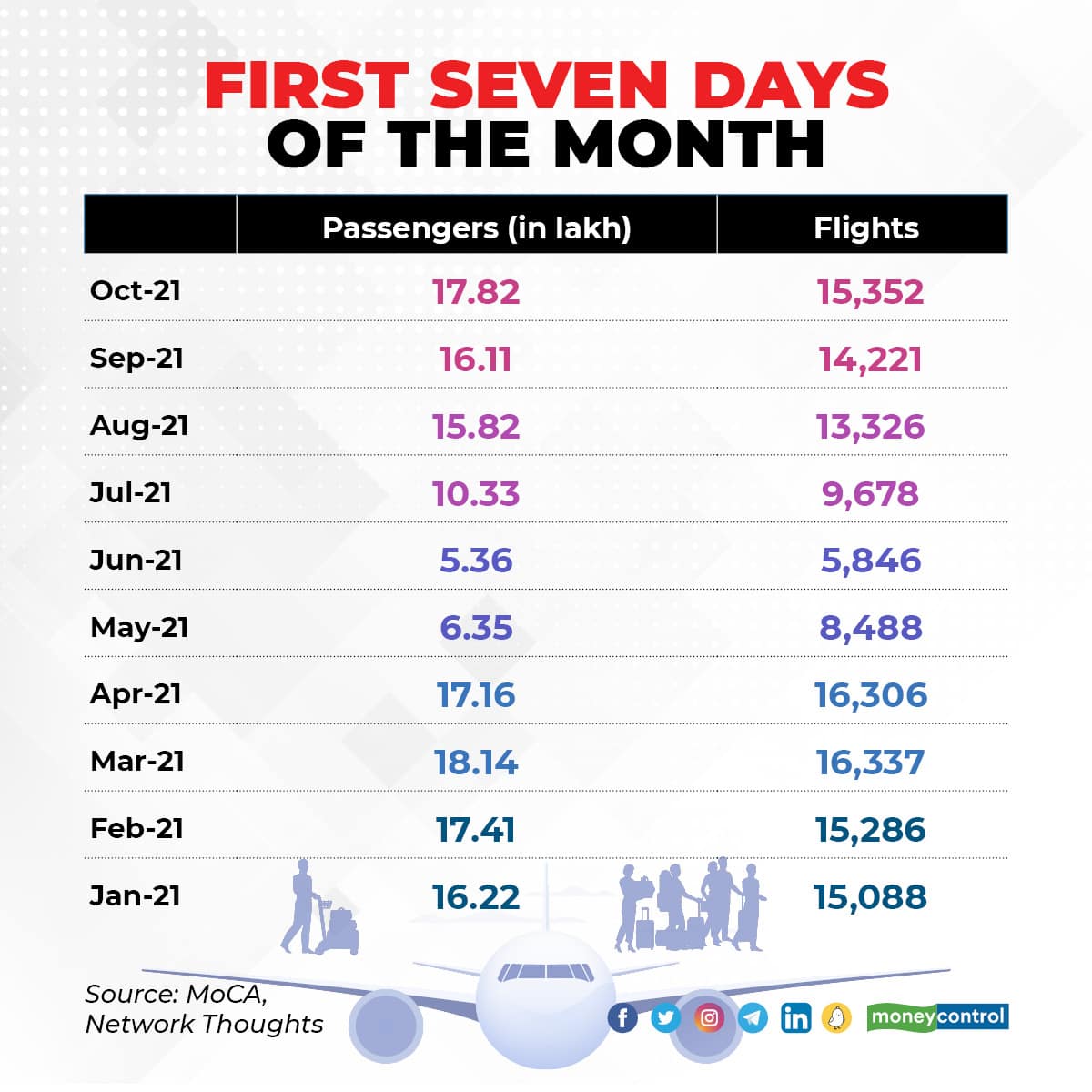



Pictures of crowds and chaos at the Mumbai airport flooded social media on October 8 morning. The airport is operating only one of its two terminals, though it is the larger one, the growing number of passengers has led a rush even when operating at reduced capacity.
While Mumbai restarts operations at Terminal 1 later this month, congestion is common at almost all airports.
And here is why. In the first seven days of October, 17.82 lakh passengers took to the skies. This is the highest count of fliers since the second wave began and second only to March 2021 when the traffic was at 18.14 lakh but there were more flights.
The traffic is being driven by a drop in COVID-19 cases, easing of restrictions for the vaccinated and opening up of both leisure destinations and business activity.
Where are the numbers headed?
At 17.82 lakh passengers, the first week of October has seen a growth of over 10 percent from the same period in September. The passenger numbers for September were flattish when compared to August.
The recovery after the second wave has been faster than it was the first time. Then, it took 10 months for passenger traffic to reach this level after operations resumed. This time it has taken just four months from the lows of June, when only 5.36 lakh passengers flew.
Also read: Navratri rush causes chaos at Mumbai airport, passengers miss flights
The airlines are also seeing a record load factor, with SpiceJet averaging a load factor of above 80 percent for the first seven days of October.
Airports are also joining the party, with Mumbai opening T1 from October 20. Delhi’s Terminal 3 will resume operations from October 31 when the winter schedule begins.
The Delhi airport handled 107,300 domestic passengers on October 3, surpassing the earlier high of 100,038 on January 10.
With indications that the traffic surge will continue during Diwali and the holiday season that follows, the government may look at relaxing the seating cap further, allowing airlines to operate at capacity.

Travel will only pick with Dussehra this month and Diwali in early November. India will start issuing tourist visas from October 15 for charter flights and for all others from November 15.
The incremental traffic will come from foreign tourists who typically travel to more than one place in the country.
Once bitten…
It was in April 2021 that a similar trend was observed. A new high in passenger numbers was being recorded each day, which was followed up by easing of restrictions and opening up of economy and tourism. A great quarter awaited but then the second wave struck.
We are in a familiar territory. In April, too, Mumbai had just opened up T1 and Delhi was on the verge of resuming operations from Terminal 1 but this time there is one big differentiator—the COVID jab.
In April, the vaccine drive had just been expanded to a larger population. As on October 7, 67.25 crore people had got the first dose and 25.91 crore were fully vaccinated.
As vaccination picks up, so does the hope of keeping the third wave at bay or at least avoiding the severity of the second wave. Restrictions have been eased for vaccinated travellers and business is coming back on track.
This also is considered the “peak quarter” for airlines. Traditionally, the October-December period is the time when families go on holidays and plan travel but with the coronavirus still very much around, caution is called for.
Discover the latest Business News, Sensex, and Nifty updates. Obtain Personal Finance insights, tax queries, and expert opinions on Moneycontrol or download the Moneycontrol App to stay updated!
Find the best of Al News in one place, specially curated for you every weekend.
Stay on top of the latest tech trends and biggest startup news.